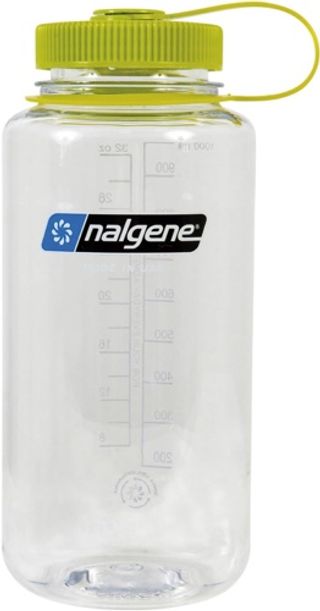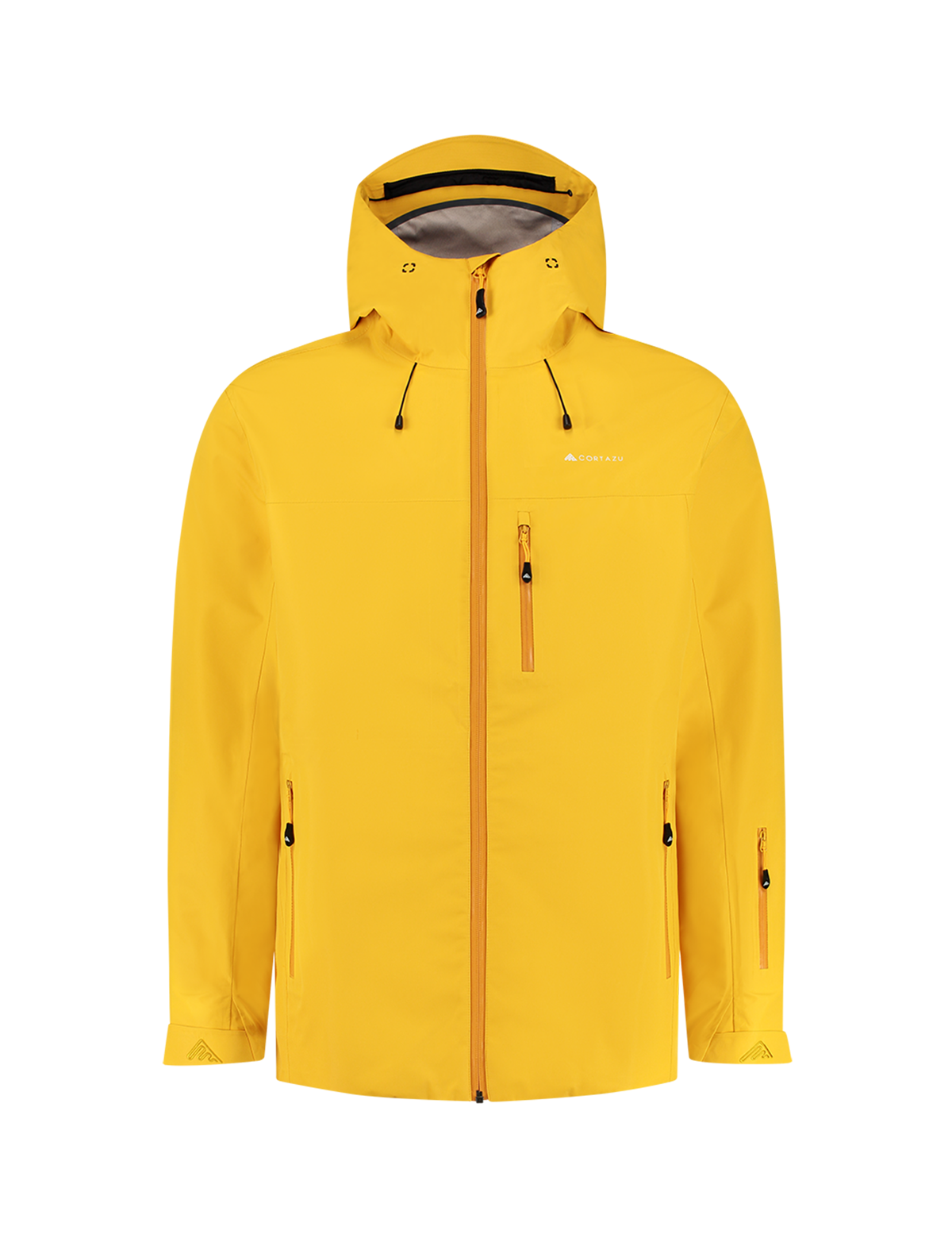How to Hike the Ausangate Trek Without a Guide
Last updated:
Nestled amidst the breathtaking landscapes of Peru's Andes Mountains lies the Ausangate trek—an extraordinary odyssey that beckons adventurers seeking a harmonious blend of natural splendor and cultural immersion. This comprehensive guide invites you on an eight-day journey through rugged terrains, vibrant lagoons, and majestic peaks, offering insights, tips, and highlights to prepare you for an unforgettable expedition. From the vibrant hues of the Seven Lagoons to the majestic views atop Palomani Pass, join us as we delve into the rich tapestry of the Ausangate trek—a trek that promises to stir the soul and leave an indelible mark on your heart.
Quick Links:
Overview
The Ausangate Trek is a trekker's paradise, offering a challenging yet rewarding expedition amidst the majestic peaks of the Andes. As a filmmaker passionate about showcasing the world's diverse beauty, this trek provides a canvas of breathtaking scenes, from turquoise lakes to towering mountain passes. Situated near Cusco, the Ausangate Trek encircles the sacred Ausangate mountain, weaving through remote villages and showcasing the vibrant culture of the Andean people. With altitudes reaching over 5,000 meters, this trek is not for the faint of heart but promises an unparalleled adventure.
Essential Information
Guides: The decision to trek with or without a guide is a personal one. Some trekkers seek the freedom of solitude, while others find comfort in the knowledge and companionship of a local guide. Personally, I prefer to start my journey alone and meet local guides along the way if I would like to know more about the area.
Navigation: For proper navigation, you should always carry a paper map and compass and know how to use them in an emergency. You can pick up any number of paper maps in Cusco when you arrive. Additionally, I typically use a gps app on my phone like maps.me or AllTrails. Check out the map for my entire route.
Accommodation: Accommodation options are limited to camping. Designated campsites exist along the route, offering a place to pitch tents and rest for the night. However, one of the beauties of this trek is the flexibility it provides in terms of camping. While there are designated spots, adventurers often have the liberty to camp anywhere along the trail, allowing for a more personalized and immersive experience amidst nature's embrace. Check out the gear list to see what you should bring.
Permits: Two permits are required during the journey. The first permit is usually secured upon entry to the park, while the second permit is typically obtained in proximity to the Anantapata campsite. These permits serve as essential documents granting access to the trekking routes and the surrounding areas, ensuring a regulated and controlled flow of visitors within the region.
Safety: Hiking in the Andes is difficult. Your safety and well-being are of utmost importance. Take time to acclimatize and relish rest days amid the tranquil beauty of the Andes. Make sure to do your own research and due-diligence. In the end, your safety is your responsibility.
Ausangate Trek Hiking Trail Map
Below is an illustrative map encompassing the main circuit of the Ausangate trek, outlining the primary trail, side trips to Rainbow Mountain, and an alternative shortcut for the return journey. This visual aid highlights essential waypoints, campsites, notable passes, and key landmarks along the route, offering a comprehensive overview of the trek's terrain and points of interest. The map serves as a valuable resource for trekkers, aiding in itinerary planning, navigation, and understanding the diverse landscapes encountered throughout this remarkable journey. Embrace the adventure, visualize the trail, and explore the splendor of the Ausangate trek through this informative and guiding map.
Learn how to download the map for your own offline use by reading how I navigate on the trail .
Itinerary
Nestled in the heart of Peru, the Ausangate trek stands as a testament to the raw, untamed beauty of the Andes Mountains. This adventure promises a soul-stirring experience through breathtaking landscapes, crystalline lagoons, and majestic peaks that reach towards the sky. Traversing through the traditional routes of the Andean communities, this trek unveils a tapestry of culture and nature interwoven seamlessly. Join us on an eight-day expedition that will etch unforgettable memories of rugged terrain, vibrant colors, and the warmth of local hospitality.
Brief Itinerary
| Day | Itinerary | Details |
|---|---|---|
Day 11 | Cusco to Pacchanta | 127km4314m |
Day 22 | Pacchanta to Seven Lagoons | 9.6km4860m |
Day 33 | Seven Lagoons to Jampa Campsite | 11.4km4615m |
Day 44 | Jampa to Anantapata Campsite | 11km4658m |
Day 55 | Anantapata Campsite to Rainbow Mountain Camping | 9.1km4882m |
Day 66 | Rainbow Mountain to Laguna Pucacocha | 9.5km4528m |
Day 77 | Laguna Pucacocha to Pacchanta | 14km4860m |
Day 88 | Pacchanta to Cusco | 127km3399m |
Detailed Itinerary
Day 1: Cusco to Pacchanta
Distance: 127 km
Highest Elevation: 4314 km
Embark on your journey from Cusco, initially taking a local bus bound for Tinke. From Tinke, a local taxi shuttles you to Pacchanta, your starting point for the Ausangate trek. As the sun begins to set, immerse yourself in the natural allure of the hot springs and take time to explore the charm of the surrounding village. Some opt to commence the trek from Tinke, the original starting location, despite the path now being a dusty or muddy road.
Day 2: Pacchanta to Seven Lagoons
Distance: 9.6 km
Highest Elevation: 4860 km
Today's hike covers 9.6 kilometers, a gradual uphill journey that offers splendid vistas of Ausangate Mountain at its peak. As evening approaches, settle into your camp perched atop a hill, relishing the panoramic view of the vibrant, multi-colored lagoons.
Day 3: Seven Lagoons to Jampa Campsite
Distance: 11.4 km
Highest Elevation: 4615 km
Embark on a 11-kilometer hike, traversing Jampa Pass at 5,063 meters, revealing a lush, fertile valley below. Keep an eye out for freely wandering alpacas along the passes. The Jampa Campsite is a popular choice, yet those seeking a more secluded spot can venture further down the valley along the river.
Day 4: Jampa to Anantapata Campsite
Distance: 11 km
Highest Elevation: 4658 km
Journey across an 11-kilometer path over Palomani Pass at 5,091 meters, treating yourself to breathtaking views of the chocolate lake, rainbow-colored mountains, and expansive glaciers. Anantapata Campsite, situated near a lagoon and glacier, presents a comfortable resting spot, although encountering other hikers is likely. For a more private area, continue your descent down the valley.
Day 5: Anantapata Campsite to Rainbow Mountain Camping
Distance: 9.1 km
Highest Elevation: 4882 km
Traverse 9.1 kilometers across Huasacocha Pass at 4,981 meters, praised for its awe-inspiring views by fellow trekkers. To avoid the throngs of tourists flocking from Cusco to Rainbow Mountain, opt to camp just before the landmark. Early the next morning, around 4:30 am to 5:00 am, ascend the remainder of the way to Rainbow Mountain, potentially relishing its splendor in solitude.
Day 6: Rainbow Mountain to Laguna Pucacocha
Distance: 9.5 km
Highest Elevation: 4528 km
Start the day early, summiting Rainbow Mountain before retracing 9.5 kilometers back over Huasacocha Pass at 4,981 meters and Apacheta Pass at 4,903 meters, culminating at the serene Laguna Pucacocha.
Day 7: Laguna Pucacocha to Pacchanta
Distance: 14 km
Highest Elevation: 4860 km
Trek 14 kilometers, maneuvering gradual ascents and descents, ultimately returning to Pacchanta. Revisit the tranquilizing hot springs, relishing a final rejuvenating soak. Alternatively, conclude your trek at Upis, though the allure of Pacchanta's superior hot springs and relatively manageable final pass often beckons.
Day 8: Pacchanta to Cusco
Distance: 127 km
Highest Elevation: 3399 km
Bid farewell to the mountains, arranging for a local taxi to Tinke and then boarding a local bus back to Cusco, concluding your adventurous journey through the mesmerizing Ausangate trek.
Personal Highlights
During my personal journey along the Ausangate trek, I was swept away by the spellbinding beauty that unfolded with each step. Among the many remarkable highlights, three particular moments stood out, etching themselves into the fabric of my memories.
Palomani Pass
Ascending to Palomani Pass at an altitude of 5,091 meters was nothing short of awe-inspiring. The panorama that greeted me was a breathtaking canvas of nature's artistry. The vistas encompassed a mesmerizing chocolate-hued lake mirroring the sky, alongside the legendary rainbow-colored mountains adorned with layers of sedimentary minerals. These vivid gradients were complemented by the colossal glaciers that seemed frozen in time. Every gaze in every direction evoked a sense of wonder and reverence for the sheer magnificence of our planet's natural wonders.
Seven Lagoons
These vibrant, multi-colored lagoons painted a mesmerizing picture against the backdrop of towering peaks. As I approached these natural wonders, the sight of alpacas and llamas freely roaming around, seemingly in harmony with the stunning surroundings, added a charming authenticity to the scene. Each lagoon boasted its own distinct hue, ranging from azure blues to emerald greens, creating a kaleidoscope of colors that seemed almost surreal. Paired with the picturesque views of the surrounding mountains, this panoramic vista was nothing short of a painter's dream come to life.
Jampa Valley
Descending into the tranquil embrace of Jampa Valley felt like stepping into a mythical oasis. Here, alpacas and llamas gracefully roamed amidst a serene landscape, their presence adding a touch of authenticity to the natural tapestry. The opaque teal rivers meandering through this valley added a sense of serenity to the surroundings, inviting a moment of stillness to absorb the tranquility of this hidden gem.
Pacchanta Hot Springs
As the trek began and concluded, the soothing embrace of Pacchanta's hot springs offered a much-needed respite. The juxtaposition of relaxation and grandeur was palpable. Immersed in the warm waters, I was treated not only to a rejuvenating experience but also to an unparalleled view of Ausangate Mountain. The ethereal beauty of the landscape enhanced the feeling of utter tranquility, making it an ideal spot to unwind and reflect on your adventures.
Weather and Seasons
Embarking on the Ausangate Trek means navigating through diverse weather conditions dictated by the Andean seasons. From the crisp freshness of Spring to the snowy landscapes of Winter, each season brings a unique charm to this high-altitude adventure.
Dry Season
May to September
Sunny days, clear skies, freezing nights
Best For:
Photography
Hiking
Camping
Wet Season
October to April
Frequent rain, mist and fog, muddy trails
Best For:
Wildflowers
Greenery
Recommended Gear
The Ausangate trek in Peru demands thorough preparation. Pack a sturdy backpack and weatherproof cover, a lightweight tent with footprint, warm sleeping bag and insulated pad, water bottle and purification gear, portable stove and cookware with propane. Choose clothing for varied climates and terrains: quick-dry shirts and pants, thermal underwear, down jacket, rain jacket, wool hat, mittens, buff, hiking socks and underwear, hiking boots, and sandals. Prioritize well-being with sunscreen, antiseptic cream, bandages, and an emergency blanket. Pack lighters and matches, toilet paper in waterproof bags, plastic bags for waste and organization, compact toiletries, quick-dry towel, passport, cash, and a laundry bag. Enjoy the trek, fully equipped!
The provided gear list is a suggestion, tailor it to your needs. Prioritize safety by packing and preparing well for a happy, adventurous hike. Interested in all of my gear recommendations? Explore all gear to see what I recommend for filming, travel, and fun :)
Costs
Transportation to/from Cusco/Pacchanta: The journey from Cusco to Pacchanta typically involves taking a local bus and taxi, costing approximately $16 for the round trip.
Permits: Necessary permits for entering the trekking area can be acquired along the way for around $10
Local Guide: Opting for a local guide, fluent in Quechua, Spanish, or English, can enhance your experience but comes at an additional cost ranging from $30 to $50 per day, depending on your trekking style and negotiation.
Food: Budget around $10 per day for food purchased in Cusco before departure. This estimate includes meals and snacks for the duration of the trek.
Accommodation: If you choose to primitive camp throughout the trek, there may not be an accommodation expense. However, staying in developed campsites or shelters might incur fees ranging from $3 to $5 per night.
Total Cost for Eight Days: $106 to $576
Conclusion
The Ausangate trek, with its raw beauty and challenging paths, stands as a testament to the wonders of nature and the resilience of the human spirit. As we conclude this guide, we hope it has provided valuable insights and inspiration for your own Ausangate adventure. Remember, this journey is not solely about conquering trails or ticking off destinations but about embracing the profound beauty of the Andes, immersing yourself in its cultural tapestry, and fostering a deep connection with nature. Whether you embark on this trek for the vibrant lagoons, panoramic vistas, or the joy of exploration, may the memories forged amidst these majestic mountains linger as a testament to the magnificence and grandeur of the Ausangate trek—a trek that invites you to discover the extraordinary within yourself and the world around you.
You Might Also Like
Safety Disclosure: This travel guide is intended for educational purposes only. Readers are urged to conduct their due diligence, verify current conditions, and research the most recent information independently. Conditions along trails and relevant details may change, necessitating the confirmation of accurate and updated information from reliable sources or local authorities before undertaking any travel or outdoor activities.
Affiliate Disclosure: This travel guide contains affiliate links, which means I may earn a commission for purchases made through these links at no cost to you. Your support helps sustain the creation of more content.



















































Comments
Tom
Hello, I like your movies and your trips. I'm planing my own trip to Ausangate, could you tell me please, is a friend of yours or a guide walking with you? I don't know the spanish language, I'd like to find a guide there Regards Tom
Nicholas Eager
Hi Tom, Thanks for watching! Brian was just a friend on that trek. For a guide, try the Cusco Hike Club Community on Facebook. Look for one who speaks Spanish, Quechua, and English for better communication and cultural insight. Ausangate is incredible—enjoy your journey! Let me know if you have questions.